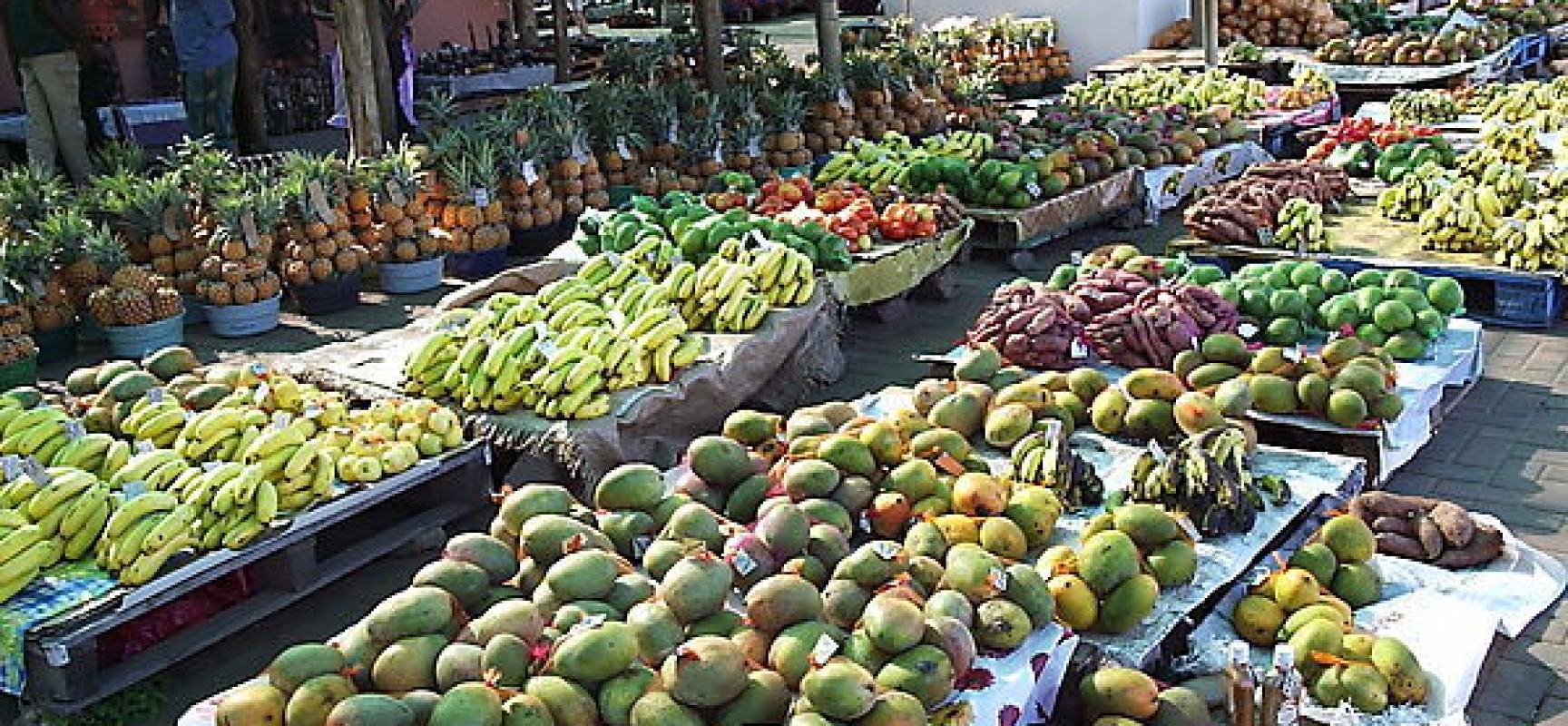By ODILIM ENWEGBARA
Since the closure of Nigeria’s land borders, there have been endless controversies surrounding that policy that was long overdue. I was in shock to see many Nigerians arguing that government should have, before the closure, developed infrastructure and the country’s agriculture in a way that there is abundance of food. My shock increased when I discovered that even some economists were toeing the line of laymen.
My questions: How is government going to provide these things that are lacking in the economy? From where will it get the $500bn needed to fix infrastructure? Since when has food become government’s responsibility? If government should provide all these things in the economy, then, what should be the role of the private sector in the same economy?
Having studied how agrarian economies suddenly became advanced industrial economies, I found that all the countries could not have transited from agrarian to industrial without first having their borders closed. In other words, they all pursued protectionist import-substitution industrialization policies in one form or another. In doing that, government had to step aside and allow entrepreneur-led private sector to drive the economy’s industrialization as they took full advantage of domestic market, now inaccessible to foreign finished exporters unless they were ready to relocate their factories to the country.
So, no industrial nation I know of became industrialized by leaving its borders free for all manner of goods and services to flood the consumer market and displace local producers. Have we forgotten that it was the World Trade Organization of 1994 that since mandated countries to allow free movement of goods, services and investments? That explains why countries that had not industrialized before then have been having difficulty trying to industrialize, since not only were they forced to leave their land and sea borders open for movement of goods from around the world but must ensure that these goods, services and investments entered tariff-free.
This neo-imperialism that caught up with us has since become normal, even we have been at the receiving end of this industrialization stumbling block. Just like the so-called nuclear nonproliferation treaty which provides that countries that already have nuclear weapons should keep them but those in the process of having them must he stopped.
Let’s start with the world’s first industrial nation, England. Exactly in 1489, King Henry VII knew that if he closed England’s borders and stopped the Lower Countries – Belgium and the Netherlands – from accessing England’s woolen raw materials, such a closure would force wool manufacturers to relocate their factories to England if they wanted to continue accessing the woolen raw material. Once he implemented his raw material export blockade, the Lower Countries’ manufacturers soon began to relocate their factories to England. Soon, England became a melting pot for European manufacturers and entrepreneurs, leading to England becoming, centuries later, where the first industrial revolution took place.
Learning from England’s experience, once the U.S. became independent, the first U.S. Treasury Secretary, Alexander Hamilton, wasted no time in 1792 to apply protectionist policies driven by border closure, banning British manufactures from accessing America’s consumer markets. He convinced the first Congress of the U.S., when he appeared before it, when he insisted that Adam Smith’s 1765 Wealth of Nations, which argued that nations should in an international trade leave their economic borders free and concentrate only on making what they have comparative advantage over other nations was only being propagated because it was designed to benefit Britain, the only industrial economy, while leaving others as mere suppliers of raw materials to Britain. With his proposed infant industry industrialization, he laid America’s industrialization and replacement of imported British goods with American manufactured goods.
Import substitution industrialization using protectionist policies was also adopted by Germany in 1841 on the advice of the country’s renowned economist, Frederick List. But to quicken the country’s industrialization, the German government went further by adding model factory policy to border closure, which leased government-built factories to businessmen who now claimed ownership once they finished the lease.
So impressed with what happening in Europe and America, Emperor Meiji of Japan was determined that his own country too should industrialize, and, in 1868, he sent out economic and industrial spies to England and Germany and demanded that they replicate whatever they saw in these countries. That was how closure of Japanese borders and adoption of import-substitution industrialization suddenly turned Japan too into an industrial economy, the first in Asia. And quickening that was Japan’s adoption of Germany’s model factory industrialization policy along with America’s infant industry protection industrialization. Japan’s catching up with the rest of industrial west became so unbelievable to have defeated Russia in the 1904-5 Russo-Japanese War of Asian imperial supremacy.
If Japan could successfully do it, Major General Park Chung-hee, believing that his civil war-torn South Korea could too, in 1961 implemented protectionist industrialization policy in South Korea. By the time he was out of power by 1979, South Korea had become a rising industrial economy with state-supported family industries leading it into industrial stardom.
China was for centuries the world’s oldest country and largest economy, until western powers occupied and controlled it after two opium wars: first (1839-42) with Britain and second (1856-60) Britain vs France. It was after a long civil war which ended in 1949 that ended foreign occupation, and China’s independence led to socialist experimentation with political border closure by Mao Zedong.
But Deng Xiaoping’s coming to power led to China’s experimentation with socialist market capitalism which led to closure of China’s economic borders, blocking imports of manufactured goods while opening up China for foreign investors to take full advantage of the country’s huge, cheap and disciplined labor force in labor-intensive manufacturing along with foreign pollution-intensive factories relocating to China’s Special Economic Zones (SEZs), the coastal areas of Shenzhen, Zhuhai, Shantou, Xiamen, Hainan, and Pudong where Deng provided them with specific infrastructure such as power, roads and ports all targeted at reducing cost of doing business in the SEZs.
The SEZ scramble triggered an unprecedented flood of factories from around the world where anti-pollution and expensive labor laws forced them to relocate to China’s SEZs where they also enjoyed tax concessions, cheap energy, export rebates, amongst others. Decades later, China not only emerged as the world’s indisputable manufacturing workshop without rival in exporting cheap and low-value consumables but also its second largest economy.
Even though Nigeria too tried import substitution in 1972, using its indigenization policy, it failed mainly because it was lopsidedly implemented, favoring a section of the country. It failed also because the country’s economic over-centralization didn’t allow private sector-led industrialization competition. But ending its import substitution came with the sudden flood of petrodollars, which created such a false impression of wealthy nation in the minds of Nigerian leaders, leading to their looking the other way while friends and business partners engaged in imported goods dumping and smuggling. The sudden disappearance of petrodollars due to the collapse of oil prices went further to end the country’s import substitution industrialization experimentation.
But rather than the 1980s helping to revive import substitution, the situation was worsened as a result of the country adopting the structural adjustment policies imposed on it by western financial institutions for loans which in most cases ended in the western bank accounts of politicians. With one of the structural adjustment policy conditions being keeping the country’s borders wide open for export of raw materials to earn forex for debt service, and with both import and export prices determined and controlled by the same western economies, the unbearable debt burdens led to the 1980s being a lost decade for countries like Nigeria.
Then came the imposition of free trade, driven by the draconian World Trade Organization in the 1990s. Abacha was forced to drag the country into such tariff-free open border if he wanted his government’s legitimacy. With such free movement of goods, services and investment, Nigeria’s already struggling industries and agriculture became decimated and in most cases completely destroyed with cheap and substandard goods from all over the world flooding the country.
The total collapse of the country’s manufacturing industries and agriculture created social dislocation, unemployment and poverty on a mass scale. Strangle crimes such as 419, and later kidnapping, ethno-religious killings, cybercrimes etc. became commonplace and, out of desperation, millions began doing everything to leave the country at all costs in search of better opportunities around the world.
Our wired presidential system of government, where oil revenue was shared among federal, states and local governments, turned us the world’s corruption and poverty headquarters. With all economic activities centralized, fighting over which ethnic group that controls the center in order to control the resources became the only battle politicians know how to fight, further reinforcing the center at the expense of state and local governments.
At such crossroads, the country’s economic sovereignty required securing its land borders, and this took place August 2019. It was especially to fully checkmate the influx of dangerous arms into the country through its porous borders with its poor neighbors who over the years became mere transit routes for cheap, substandard and harmful goods from rice, beef, fish to poultry. Malaysia and Indonesia also flooded the country with cheap and substandard palm oil. Benin Republic, for example, with its few million rice consumers, became the largest importer of expired and repackaged rice, targeted at Nigeria’s 200 million consumers. Kidney disease and other strange ailments became widespread.
With the closure of land borders having brought smuggling to a sudden end, the unbelievable is happening in Nigeria’s agriculture and food processing now being revolutionized by the country’s superrich billionaires. This was something unthinkable before the border closure. With this, Nigeria has now become the largest rice producer in Africa, besting Egypt. Palm oil too is now witnessing new entrants who are not competing with Okomu, Presco and PZ Wilmar all owned by Europeans. State governments have suddenly rediscovered how agriculture could be used to kick-start their state’s agribusiness-based industrialization, exploring value proposition and investing in the agricultural value chain for high revenue and job creation.
Faced with dwindling revenues and poverty and unemployment-provoked insecurity, most state governments are now placing emphasis on stock-taking of their agricultural and agribusiness potential. And no state governor has been as aggressive as Bello Matawalle of Zamfara who, in his efforts to battle banditry, is now investing in mega rice, cashew, millet, beans, garlic, ginger, and tomato plantations along with setting up milk, cheese, yogurt, meat, and skin processing plants.
It is this agribusiness integrative capacity that is in the process of triggering the diversification of the economy. But sustaining this will require government to quickly pursue fiscal federalism and private sector-led infrastructure investments. Power, roads, sea and rail investments must be private sector-led. Let regional economies emerge to drive economic diversification by being responsible for developing specialized industrial parks for startups and infant industries where factory buildings, warehouses, offices, roads, power, water, security, and other services are provided.
Let a quarterly program like “president meets Nigeria’s 100 mega-entrepreneurs” be initiated — the president sits down with them and, during frank and exhaustive conversations, explores the best ways to help them drive the country’s belated industrialization. Recognizing, appreciating and protecting these business moguls as major stakeholders in the economy would give them the ownership needed to patriotically invest in the country’s economy.
Enwegbara, an economic analyst, writes from Abuja











